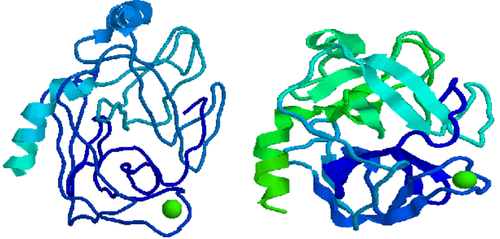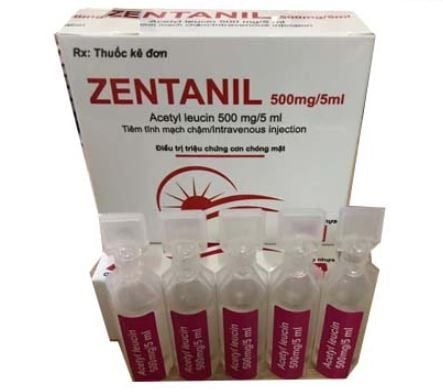This is an automatically translated article.
Gene sequencing technologies cannot sequence the entire genome of a food at once. Therefore, the genome must be broken down into smaller pieces of DNA, sequenced and then put back together in the correct order using biological approaches. That would help crack the genetic code for foodborne illness. Read the article below to help you better understand this issue.1. What is gene sequencing?
Determining the order of the building blocks of DNA (nucleotides) in an individual's genetic code, known as DNA sequencing (or gene sequencing), has helped advance the study of genetics and is a technique used to check for genetic disorders. The two main methods of gene sequencing, whole-exome sequencing and whole-genome sequencing, are increasingly used in research and healthcare to identify genetic variants. . Both methods rely on new technology that enables rapid sequencing of large amounts of DNA. These approaches are known as next-generation sequencing.The original sequencing technology, called Sanger sequencing (named after the scientist who developed it, Frederick Sanger), was a breakthrough that helped scientists identify the genetic code of people, but it takes a lot of time and the cost is also very expensive. The Sanger method was automated to make it faster and is still used in laboratories today to sequence short stretches of DNA, but it would take years to sequence all of a person's DNA. (called the person's genome).
Next-generation sequencing has accelerated the process (it takes only days to weeks to sequence the human genome) and greatly reduced costs. With next-generation sequencing, it is now possible to sequence large amounts of DNA, such as all the fragments of an individual's DNA that provide instructions for making proteins. These pieces, called exons, are thought to make up 1 percent of a person's genome. Together, all the exons in a genome are called exomes, and the method of sequencing them is called whole-exome sequencing. This method allows the identification of variations in the protein-coding regions of any gene, rather than just in a select few genes.

Xác định thứ tự của các khối cấu tạo DNA (nucleotide) trong mã di truyền của một cá nhân, được gọi là giải trình tự DNA
Another method, called whole-genome sequencing, is based on determining the order of all the nucleotides in an individual's DNA and can identify variations in any part of the genome. gene. While more genetic alterations can be identified by whole-exome and whole-genome sequencing than by selective gene sequencing, the significance of much of this information is still unknown to scientists. find out.
Because not all genetic changes affect health, it is difficult to know whether the identified variants are associated with the health condition of interest. Sometimes, an identified variant is associated with another undiagnosed genetic disorder (these are called random mutations or secondary mutations). In addition to being used in genetics-related hospitals or clinics, whole-exome and whole-genome sequencing are valuable methods for researchers. Continuing gene sequencing and exome studies can help determine whether new genetic variants are associated with health conditions, which will greatly aid in future disease diagnosis. especially rare genetic diseases.

Các công nghệ giải trình tự gen không thể giải trình tự toàn bộ bộ gen của thực phẩm cùng một lúc
2. Cracking the genetic code for foodborne illness
For criminals, investigators and detectives use DNA evidence collected from crime scenes to track down the criminal. Or sometimes there's an outbreak of foodborne illness that makes people sick, and the Food and Drug Administration (FDA) uses DNA evidence to track down the bacteria that cause it. It sounds far-fetched and unlikely, but it's been proven that the FDA has used a sophisticated, advanced technology called whole-genome sequencing to aid in the investigation of food-borne diseases. caused product. In the simplest terms possible, whole-genome sequencing is a quick way to find out the order of DNA nucleotides, or bases, in a genome such as the order As, Cs, Gs, and Ts make up. make up the DNA of all living things. The human genome is made up of almost 4 billion of these genetic letters in sequence, and Bacteria have fewer genes and genetic letters. When a diseased area appears, scientists study the genome of the bacteria that causes the disease, called a pathogen.In the most recent time, whole-genome sequencing has been a tool in the investigation of a multi-state outbreak of Listeria monocytogenes infection. The researchers sequenced and identified a likely source of the disease in this outbreak, which was frozen vegetables sourced from CRF Frozen Foods of Pasco, Washington. The FDA investigation began in mid-March. “An important clue emerged when the Ohio Department of Agriculture alerted us to a common product sample where they found Listeria monocytogenes in a particular brand of product,” says Kathleen F. Gensheimer, MD. frozen organic sweet corn and frozen organic chickpeas,” Kathleen F. Gensheimer, MD. , MPH, Chief Medical Officer and Director of the FDA's Joint Outbreak Evaluation and Response Network (CORE). The FDA worked with the Centers for Disease Control and Prevention (CDC) and state ministries of health and agriculture, using whole genome sequencing to match DNA obtained from the bacteria Listeria monocytogenes found in food samples collected by the investigators, and bacterial DNA in samples taken from people who had had listeriosis. After the results were made public, starting in April, CRF Frozen Foods initiated and then expanded the recall to include hundreds of frozen fruit and vegetable products sold under 42 brands. individual. Whole-genome sequencing has shown that the strain of Listeria monocytogenes in frozen corn is genetically closely related to the bacteria found in 7 people with listeriosis. . In addition, sequencing revealed a similar relationship between Listeria monocytogenes found in frozen peas and bacteria found in an eighth person who was also ill.

Trong thời gian gần đây nhất, giải trình tự toàn bộ bộ gen là một công cụ trong quá trình điều tra một đợt bùng phát đa trạng thái nhiễm khuẩn Listeria monocytogenes
Whole-genome sequencing can do more than pinpoint the source of foodborne disease outbreaks with high speed and accuracy. More specifically, the FDA is using it to:
Determine which diseases are part of an outbreak and which are not? Identifying which ingredients in multi-ingredient foods are causing outbreaks Distinguishing sources of contamination, even within the same outbreak Linking a small number of diseases, including diverse diseases geographically occurring across multiple locations.

Việc giải trình tự toàn bộ bộ gen có thể làm được nhiều việc hơn là xác định nguồn gốc bùng phát dịch bệnh do thực phẩm với tốc độ và độ chính xác cao
If you have a need for consultation and examination at Vinmec Hospitals under the nationwide health system, please book an appointment on the website for service.
Please dial HOTLINE for more information or register for an appointment HERE. Download MyVinmec app to make appointments faster and to manage your bookings easily.
References: medlineplus.gov, fda.gov












